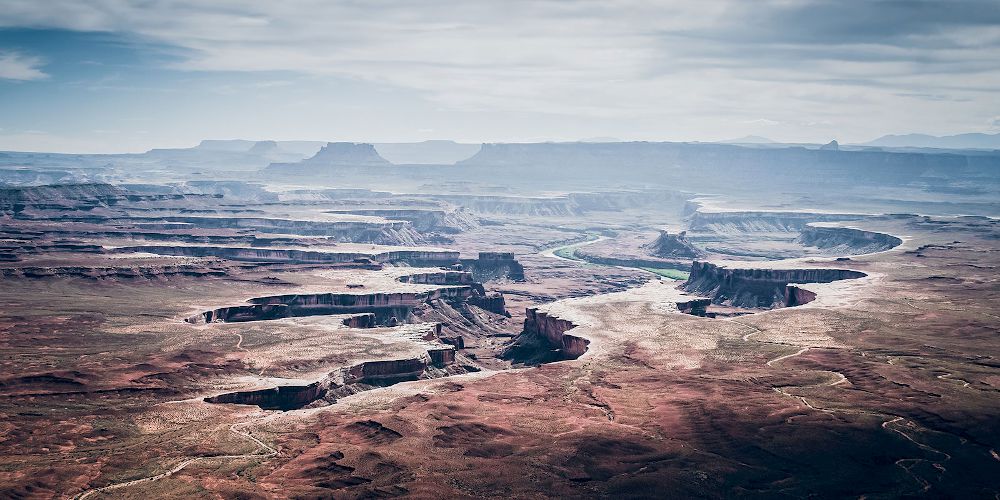Going to the stars has been a society-wide dream for many generations, and for decades now, artists and writers have been imagining what these far-flung places would look like.
"Harsh" is what they often describe these alien worlds to be. Unforgiving, or toxic, or most of them with extreme weather.
No one has stepped foot on an alien planet before, so how do these artists dream up these amazing places? Well, by looking at the landscape of our own world, of course. Here are some of the most sci-fi places you can find on our planet.
1. Antarctica

Antarctica is the coldest, most inhospitable place on Earth. It's also our fifth largest continent. Covered in ice and classified as a polar desert, its lowest temperature ever recorded was -129 degrees Fahrenheit.
While some people do reside in research stations throughout this wasteland, the area is otherwise completely uninhabited by humans. I mean, why would you want to live there when it's basically the same as living in space?
Sure, there's oxygen, and there's animals, but the extreme weather and landlocked ice desert is comparable to numerous sci-fi planets, ranging from Star Wars' Hoth to Mass Effect's Noveria. The weather is too harsh to deal with.
2. The Namib Desert

The Namib is an absolutely stunning desert located along the coast of southern Africa. Stretching from Angola to Namibia, the area is notable for its red dunes that look like they came straight out a picture from Mars.
Scientists speculate that the Namib is the oldest desert in the world. Over the past decade, the Mars Exploration rovers Spirit and Opportunity sent back pictures of the red planet, and the similarities between the Martian deserts and the Namib are striking. It's not hard to see why sci-fi authors could get their inspiration from it.
3. The Mariana Trench

The Mariana Trench has influenced writers and artists for years with its watery, mysterious depths. Located in the Pacific Ocean, the Trench is over 10,000 meters at its deepest point, and 69 miles wide on average.
At the bottom of the Trench the pressure is so intense that we still have issues exploring it. The isolation of this area is similar to the isolation that you would feel in space or being on the moon.
Fun fact: There are creatures lurking in the dark, too, at least on Earth. We have data showing that microorganisms live at the bottom of the Mariana Trench.
4. The Darvaza Gas Crater

Have you ever wanted to peer into the mouth of Hell? The Darvaza Gas Crater in Turkmenistan is literally called the door to it, and it looks like a fiery pit in the middle of a flat field.
Created by a natural gas field collapsing into an underground cave, those in charge of dealing with the disaster set the pit on fire to prevent the spread of gas. Their plan failed, and the Darvaza Gas Crater has been burning continuously ever since.
The crater in engulfed in orange flames, and brings to mind what "space" would look like on a highly volcanic planet like Venus: incredibly inhospitable and piping hot. Similar to the Mariana Trench, a National Geographic team found microbes living at the bottom of the crater.
5. The Grand Canyon

Lastly, we need to give a shoutout to the Grand Canyon. Yes, that Grand Canyon—the one that runs through Arizona.
The Canyon is one of the wonders of the natural world. Mention it to anyone in the West, and they'll probably be able to recall seeing pictures of it in books and documentaries when they were kids.
Hugh, twisting and dry—with the Colorado River running through it—the Grand Canyon looks like it came straight out of a sci-fi movie. In particular, we think it would fit right in with the pod-racing fields of Star Wars' Tatooine.
It's not surprising that so many places on Earth look like they came from the stars, because Earth is from the stars, too. The only thing that makes our planet less "alien" is the fact that we have oxygen and water. We've also had the chance to adapt our planet to human development over thousands of years.
